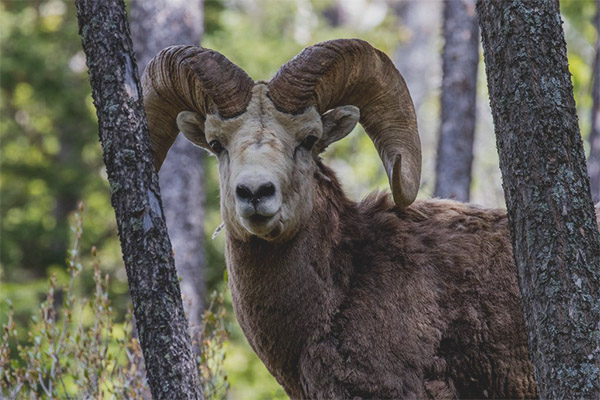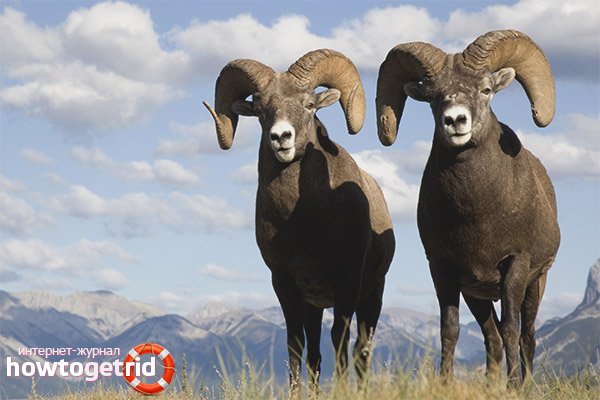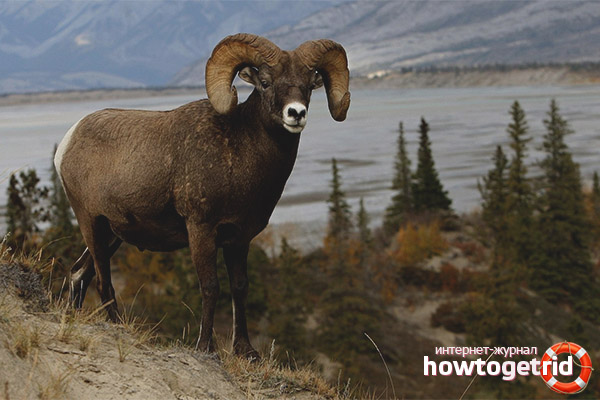The content of the article
Everyone knows that sheep differ in particular stubbornness and desire to move forward. The most popular among them is the Altai mountain sheep.
It is noteworthy that the representatives of this breed are the largest in size from the subspecies of Argali. There are practically no pure representatives in nature. The farm today uses their hybrids with sheep.
Security
Since there are very few representatives of the breed in nature, they belong to the first category and are strictly protected. They were inscribed in the Red Book in Soviet times. But today these animals are on the verge of extinction.
Description
Individuals have a different color, which varies seasonally. By the fall, the color of the fur of these animals becomes brown, and by spring it becomes lighter, with gray and reddish shades present in the coloration.
This wild ram has a slightly lighter coat on its belly and back. Most often it is white or gray, but there are also reddish blotches. According to the observations of experts, in old animals the shade is always darker than in young ones.
In the summer, their wool sheds, while often changing color from white to reddish. During this period, their skin is itchy, so animals can show aggression.
Habitat
To date, they can be seen only in 3 small areas located in different places on our planet. All of these areas are under vigilant protection.
- This is a territory located on the border of China with Mongolia.
- On a small ridge Saylugem.
- Another place is located in the mountains Chulyshman.
The natural habitat for the Altai sheep is the steep slopes of the mountains, as well as the mountain steppe. Sometimes people notice them above sea slopes at a height of several kilometers. Rams prefer to live on high rocks.
From plants, they are very fond of willow and birch. But where these sheep live, birch trees are almost gone, as they were eaten. Today, in the territories inhabited by Altai sheep, various cereal crops (small grass, legumes, etc.) grow. These are the wild animals that feed on them. In the heat they eat food several times a day, but they come to the watering place only once every few days.
Number of
By the end of the 18th century, these wild sheep could be found on the Tigirets Ridge, as well as in the mountains nearby. At the beginning of the next century, it was claimed that they live in a mountainous area near the Argut River valley, as well as on the Chulfman Plateau.
At the turn of the 19th and 20th centuries, researchers claimed that the rams again moved to a new place. Now they were seen on Sayugema. The number decreased significantly from 600 to 230 individuals. In 1995, there were 320 representatives.
Limiting factors
- Experts believe that, first of all, the number and distribution of Altai sheep is affected by the displacement of other animals from their habitats. In the mountains there are many yaks and goats that occupy pastures. As a result, they push the rams too high into the mountains, where they cannot find food for themselves.
- Another important factor that reduces the number of Altai sheep is cruel poaching, which reaches a considerable scale. Animals have been protected by law for many years, but this does not stop many. In an effort to cash in on poachers track sheep in all habitats. Unfortunately, the authorities do not always manage to deal with this destructive phenomenon for nature.
- In addition, there is another factor that affects the number of individuals. People can not affect him. These are weather conditions. During the last 20-30 years, weather conditions have contributed to the fact that wild sheep were very difficult to survive.From adverse weather conditions today, a large number of animals are dying. This is especially pronounced in winter. It is becoming more and more difficult for rams to find food for themselves, as a result of which they become weak and cannot overcome steep slopes. In the middle of winter, they begin to die.
All these reasons may soon lead to the fact that the Altai sheep disappear completely.
Breeding
A case was fixed when a sheep kept in captivity lived for about 6 years. It was on the territory of Russia in one of the biological institutions.
Keep these animals as close as possible to their natural environment. They need to create favorable conditions, properly care.
As a rule, mountain sheep form a large herd. Females, as a rule, walk alone, and males move in such a way that in case of danger they protect offspring and females.
Breeding
Mating occurs in November. Pregnancy lasts about 5 months. And in the beginning of May 1 lamb is born. Immediately after birth, they can stand and walk.
The Altai mountain sheep is a unique animal, which, unfortunately, can completely disappear.
Video: Altai mountain sheep (Ovis ammon ammon)













To send